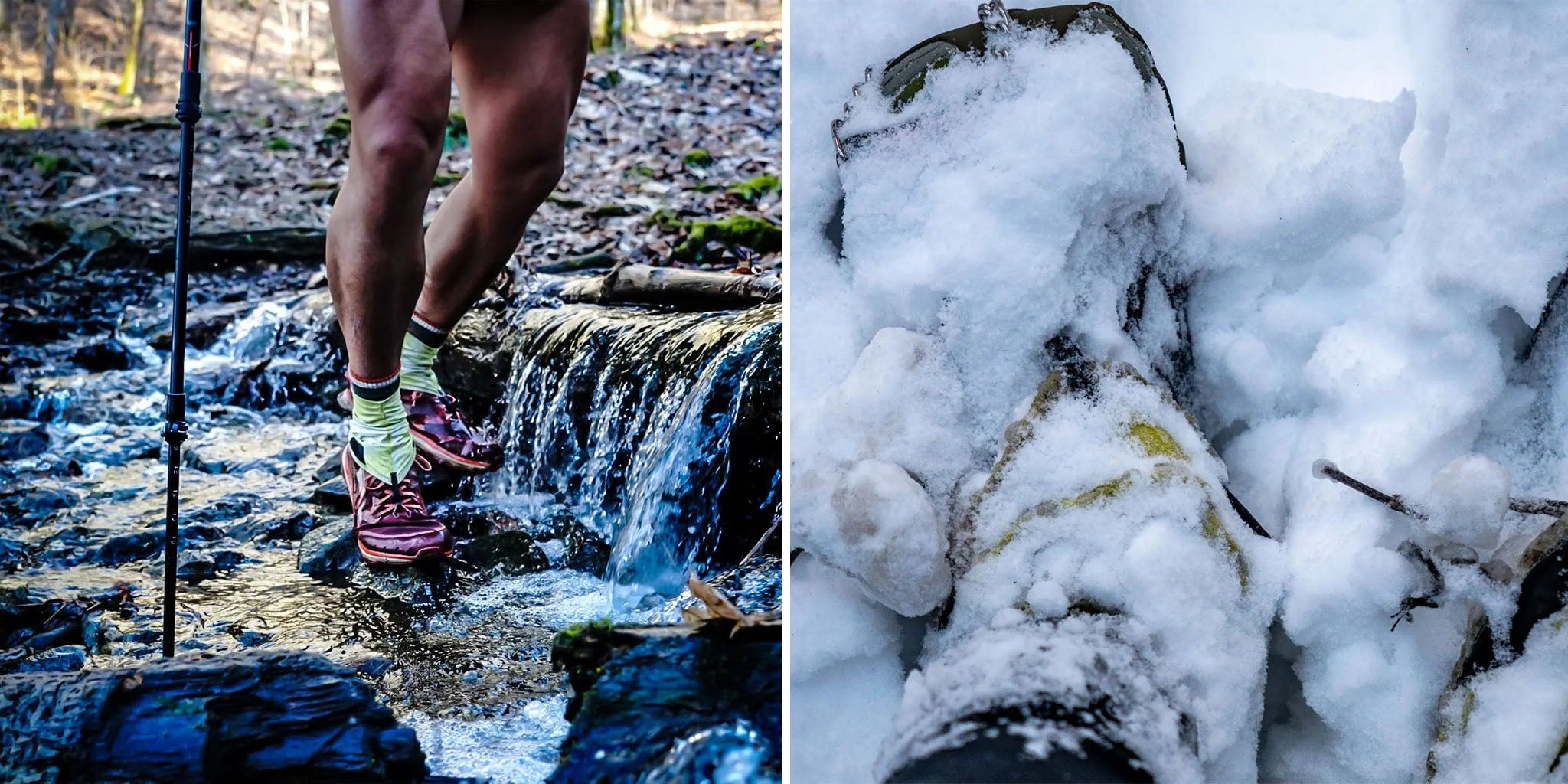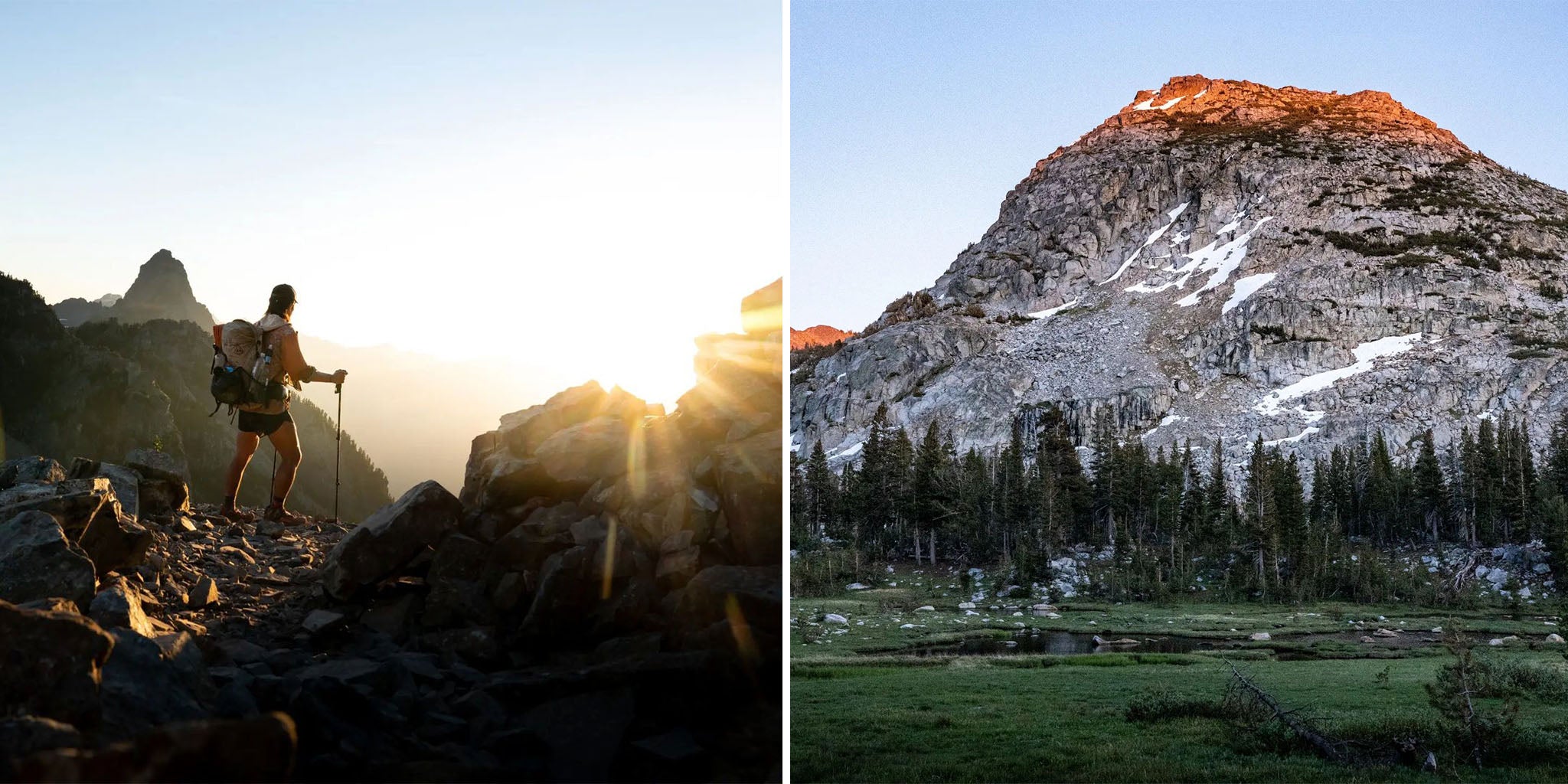RO(U)TE LEARNING: QUADZILLA’S TAKEAWAYS FROM DAYS ON THE APPALACHIAN TRAIL AND PACIFIC CREST TRAIL
Words and Photos from Jack “Quadzilla” Jones
Jack "Quadzilla" Jones is setting out this year to achieve what only a small number of backpackers have; a calendar year Triple Crown. 8,000 miles of hiking following the routes of the iconic Big Three – the Appalachian Trail, the Pacific Crest Trail, and the Continental Divide Trail. At the time of this posting, he’s currently in Montana on the Continental Divide Trail.

Let's talk about lessons learned from the Appalachian Trail and the Pacific Crest Trail and how the routes compare.
The first thing that comes to mind is that whatever you read in a book or see online, in most cases, won't be as bad when you're actually out there. However, in other cases, it'll be worse! If you go through my Instagram posts and watch my videos, I'm sure it'll look like a pretty miserable time for a lot of it–and a lot of it was. But the reality is I only really write about or film the highlights and the lowlights because it's not that interesting to read about the twenty miles of smooth sailing you did that day.
If it rained for two hours, the wet and the cold is what stands out, even if the majority of that day went well. Hiking the A.T. in Winter certainly presented more challenges and many more events with ice and cold and suffering, and those "worst" times and the most dangerous instances are the first to come to mind. But the majority of the trail was fine–there were just a lot more of the more miserable things that you don't encounter when you hike it in the Summer.

My first point then is to not let what you read scare you from attempting something like a calendar year triple crown or even just a normal thru hike. Once they get out there, I find that most people will find that they have the fortitude to withstand everything.
It's like rain. I remember when I was starting out, I just did not want to be out in the cold rain, especially when it was February and 40 degrees out. But it wasn't that bad once I was out in it. That's, of course, with the proper gear. With that, you can stay relatively warm and dry–you'll be fine–everything is like that. If you're properly prepared, it doesn't matter what the conditions are–those conditions that you're dreading–it will be okay!

Along those lines, people are very concerned about having wet feet. I got that question a lot because, on the A.T., it just rains all the time. And through the snows of Vermont and New Hampshire, I had soaking wet shoes and feet for about 50 straight days, starting at the end of Pennsylvania until I finished at Abol Bridge in Maine. I found that as long as my feet were conditioned and calloused and used to walking long days–it didn't matter that they were wet. I didn't get a single blister on the A.T. The only thing that could have become an issue was the cold and wet–I did have waterproof socks I used for shorter sections when the temperatures were pretty cold. The socks would still wet out, but they did provide warmth. Otherwise, it was fine as long as you kept moving.
I see people going to ridiculous lengths to keep feet dry on the PCT. They'll go an extra half-mile just to reach a fallen log over a stream. If the water is too high, fast-moving, or unsafe, maybe that's a time to do that, but otherwise, I don't think it's worth it. I figure just let your feet get wet, and they'll dry as you move along–you'll be fine–the wet doesn't really affect you that much.

Another mention of having the proper gear–I encountered a brief rain and snowstorm in The Sierras one day out of Kennedy Meadows. I had already ditched my mid-layer and my rain pants. On that occasion, I was actually much colder than any time when I was on the A.T. I had to set up my tent and crawl into my sleeping bag because I just couldn't get my core temperature back up–all because I didn't have enough gear for the conditions. Even though on the A.T., I experienced much colder temperatures and more rain, snow, and cold, I was better able to handle it with the right gear, and having a pack that is mostly waterproof helped tremendously. If on that day, my sleeping bag had gotten wet, I would have been in a much more dangerous situation. Being able to keep gear dry is a key factor – it's huge!

I learned that determination and goals are super important. This time I was able to do the A.T. twice as fast as the first time because I had big goals. I was able to push all the way through to the border of Baxter State Park in Winter-like conditions when most people that do a calendar-year triple crown will get off in Vermont or whenever the snow becomes an issue and begins to slow them down. That was my original plan as I went, but I realized I'm a pretty strong hiker, and I can do this–I can push through.
When I made that decision, I didn't let myself have an out. I think that's really important. Make a firm decision and then stick to it. If I had told myself I'd just see how far I could go–that if it got too tough, I would just jump off and head to a different trail, I definitely would have somewhere in New Hampshire or in Southern Maine because there were days between Mount Wolf and Mount Kinsman that the snow was waist-deep. At times there were no blazes on the trees, and it was very difficult to find the trail. No one had been through there all winter–just deep piles of fresh snow. It was extremely slow going, extremely tedious. I was probably going half a mile an hour. It just took forever to go through that very short stretch. It would have been really easy to say to myself that it was too much, but once I was determined and had made that decision, it allowed me to just push through and focus on moving, stop counting my miles, and stop thinking about how fast I was going.

As long as I kept moving forward, I was eventually going to get through there. I had that understanding that no matter how bad the conditions were, they weren't going to last forever–no matter how steep a climb or descent–I would get through it. That really helped me throughout that entire section. It was about 200 miles in New Hampshire and Southern Maine where I averaged less than one mile an hour, and I just had to slog through it.
But, you know, I did. And when I was hiking sixteen to eighteen hours a day, it wasn't that long–like ten or eleven days to get through it. In the totality of all the miles I'll do this year, it really wasn't a long time at all!
I was very happy with the result. I felt that I had overcome a lot of fears, a lot of blocks, because now I can know with confidence that no matter how difficult something is, if I can just determine to do it in my mind and keep at it, then I will do it. I just have to keep going–that's it! And it becomes less stressful.

The PCT is certainly easier in terms of grade. The climbs are much smoother and less rocky. It's a lot easier to go three miles an hour, even uphill, and three to four downhill. But it doesn't mean the PCT is easy! I actually got the worst blisters I've had yet on the second day just from all the dirt and dust on the trail. It gets into your socks, and it's like sandpaper. That was very challenging.
My pack was the heaviest it had ever been in the desert and then the Sierras because of the long water carries. In May and June, I sometimes had five or six liters, a bear can, and the longer 100-150 mile distances between resupplies added to the challenge even if the grade itself wasn't as difficult. Overall though, I'm just finding the PCT to be more pleasant; it's just easier walking, more flowy, easier to get miles in, and the weather is waaaay better than on the A.T. Hiking in the correct weather window helps a lot! It's barely rained at all, the temperatures are fantastic, and there are people around. I only saw two other hikers after Pennsylvania–essentially half the trail, just two other thru hikers–so having others around has definitely given me a boost.
The A.T. taught me what I'm made of. That was one of the things I came out to the trails to figure out, really. That experience through the ice and the snow was enough to show me, and now I don't have that question anymore. Now I'm out here on the PCT and just really enjoying it, able to hike stress-free with less of a timeline. I know whatever I'll encounter in Colorado, I'll just figure it out!
